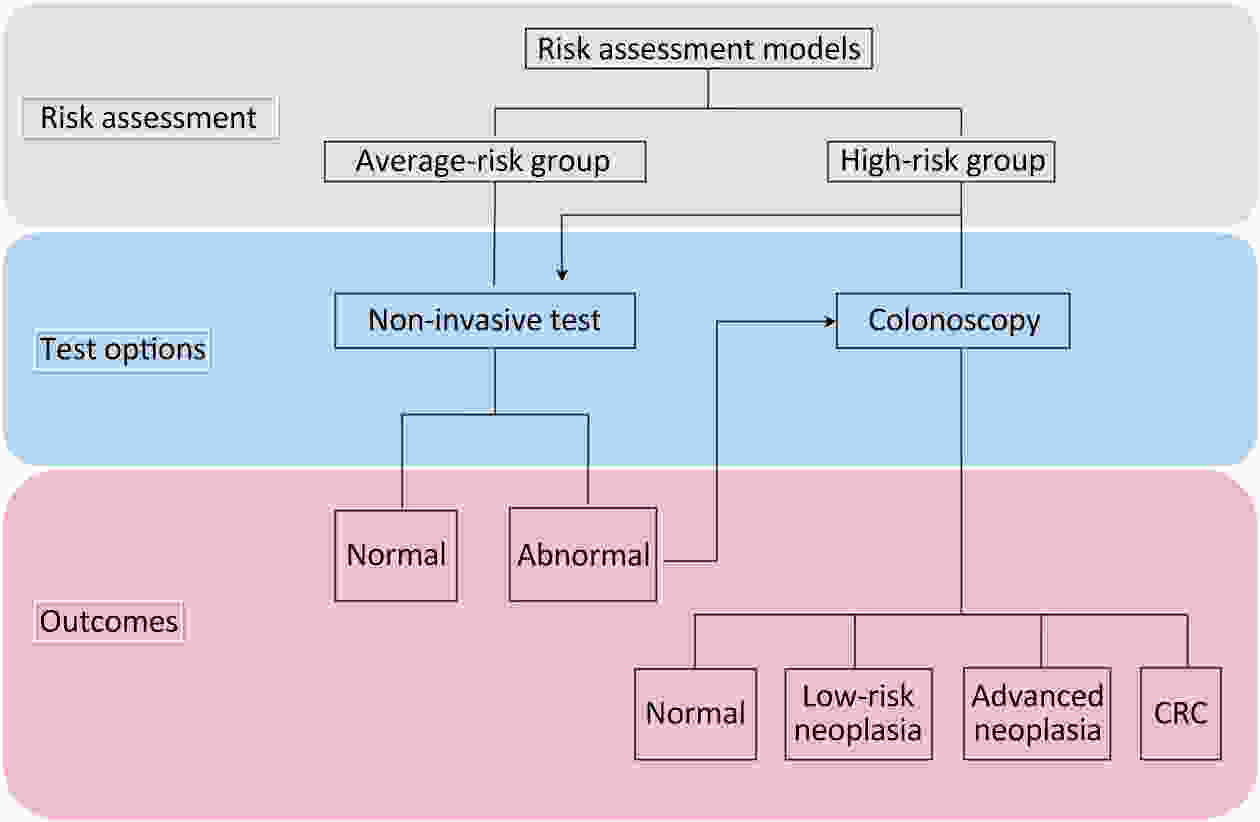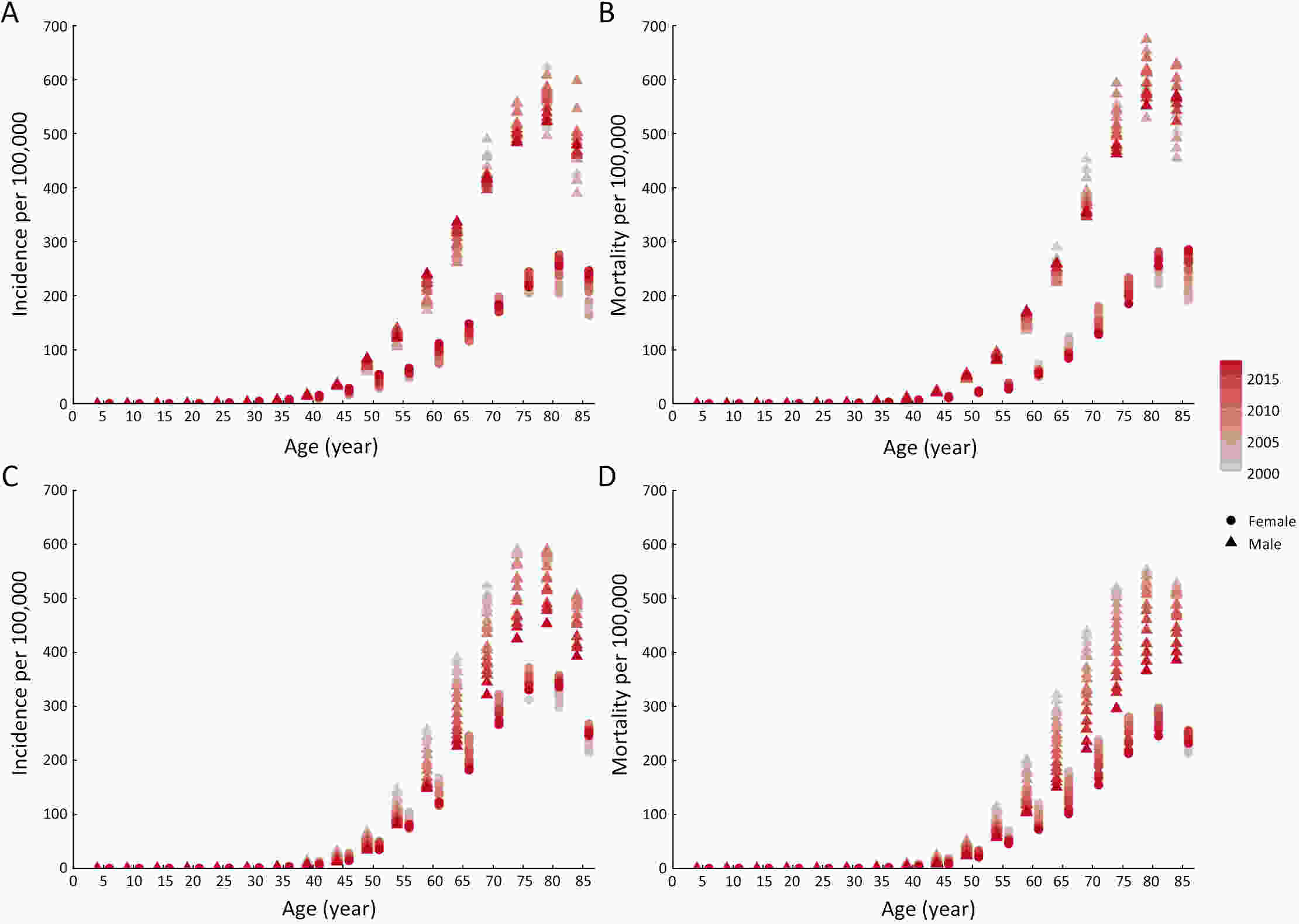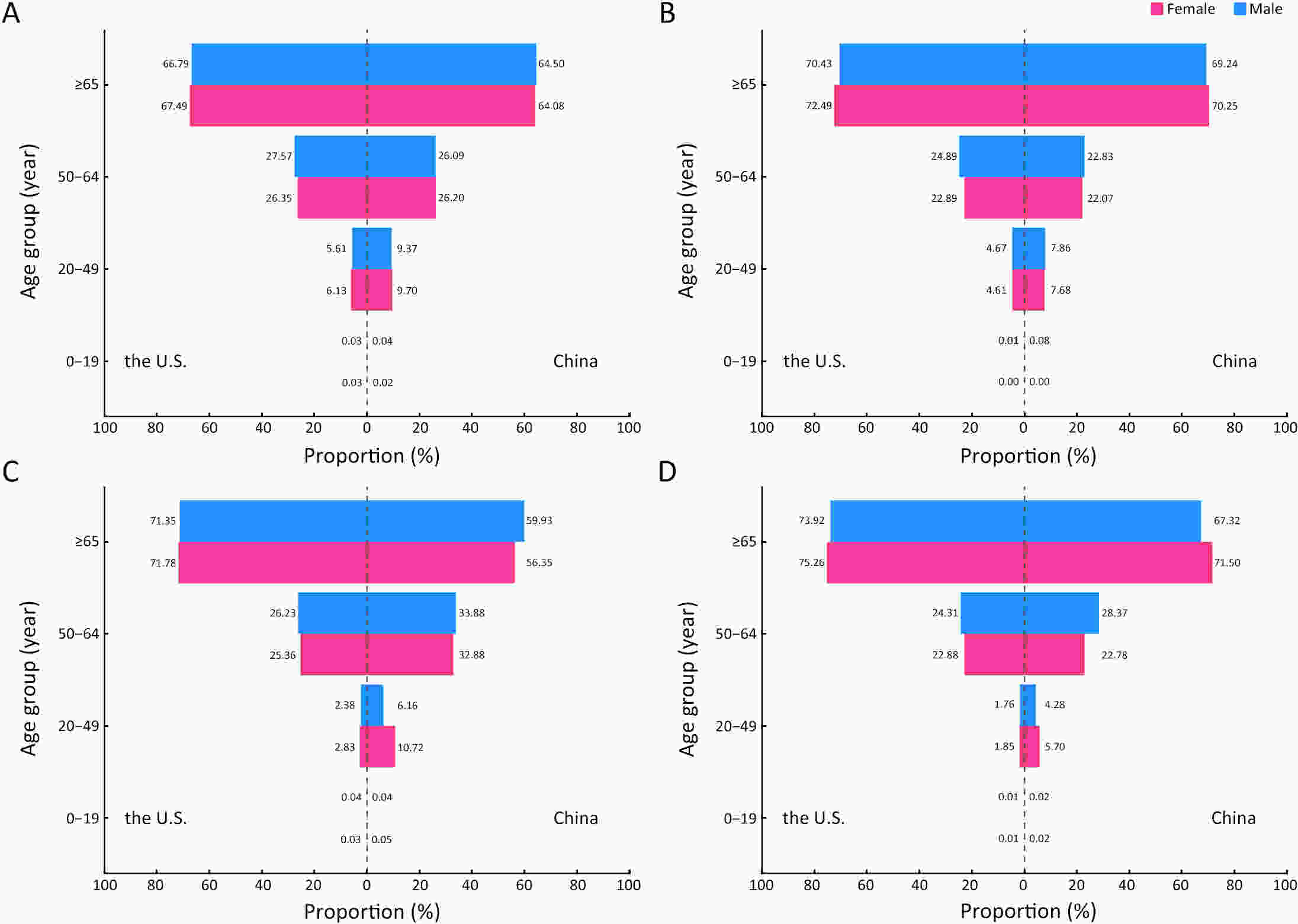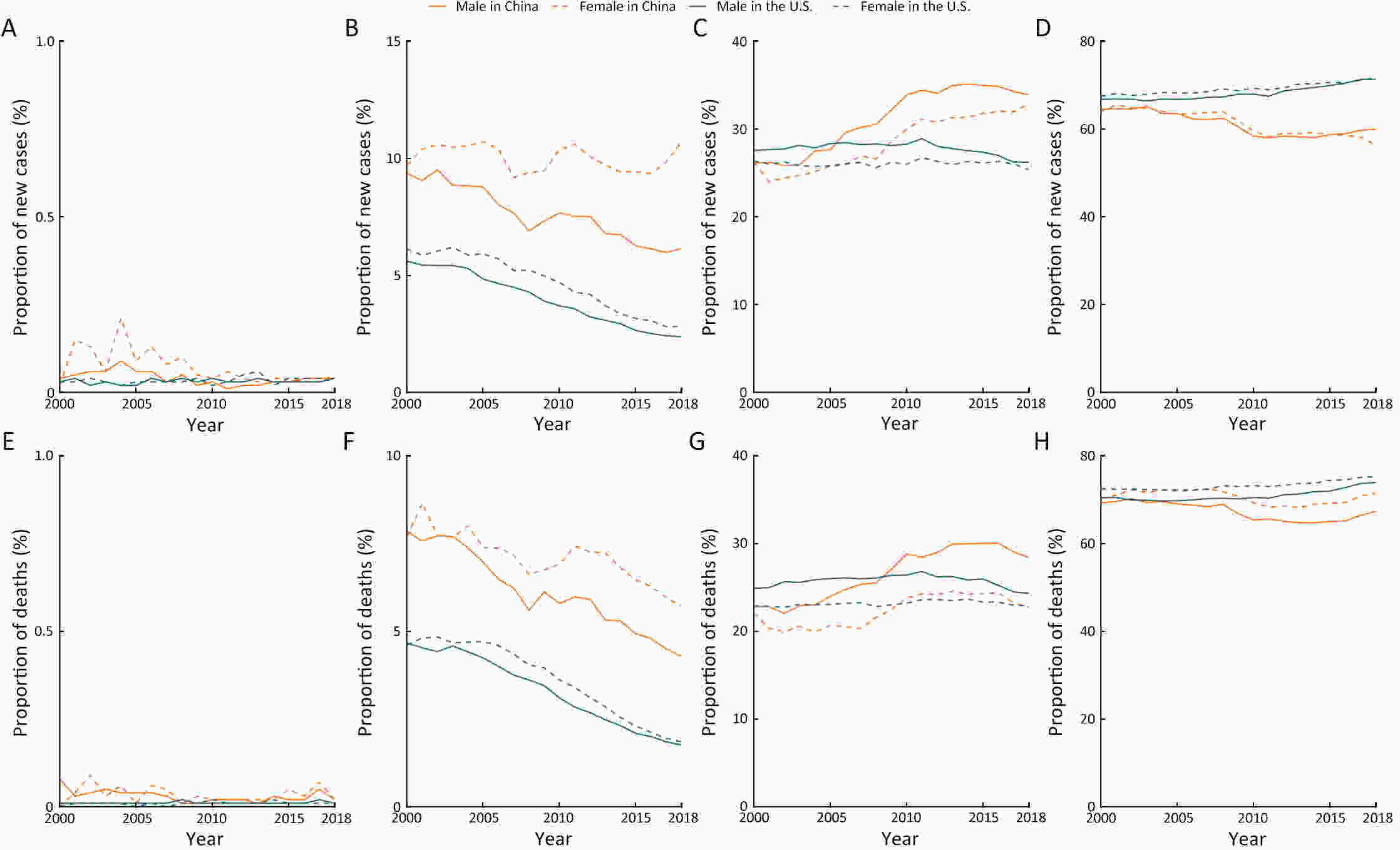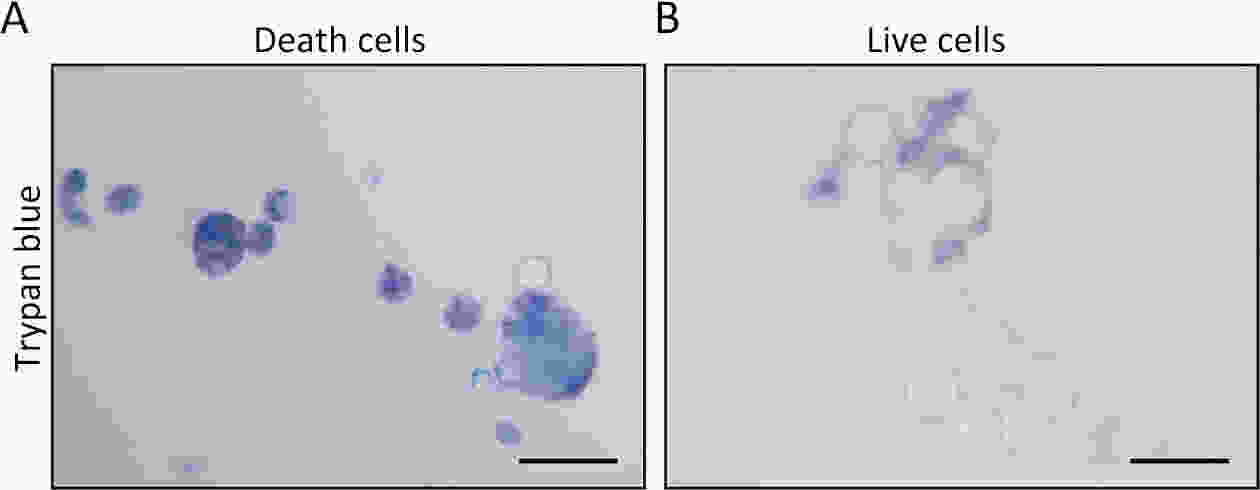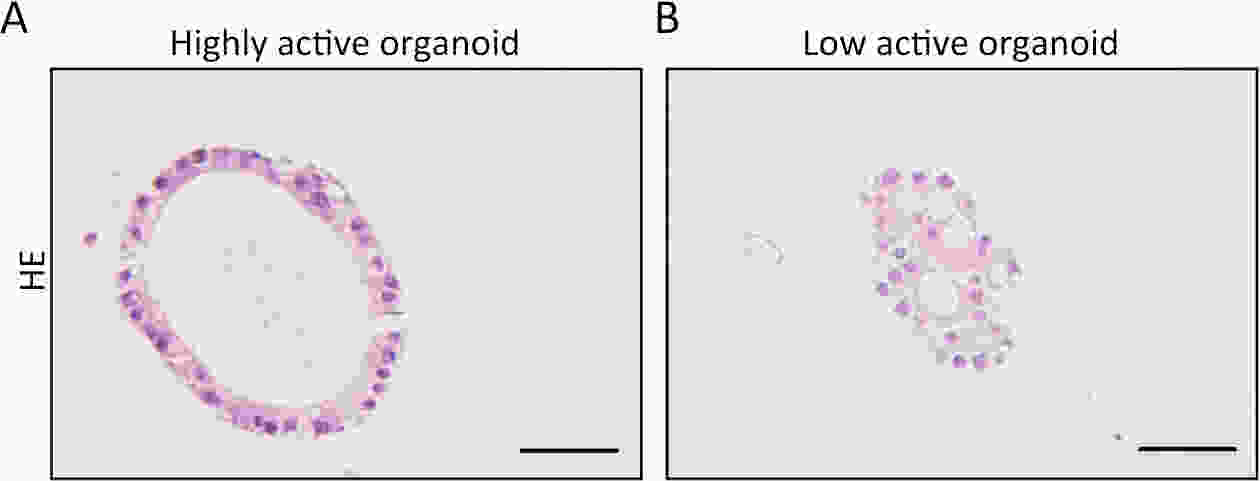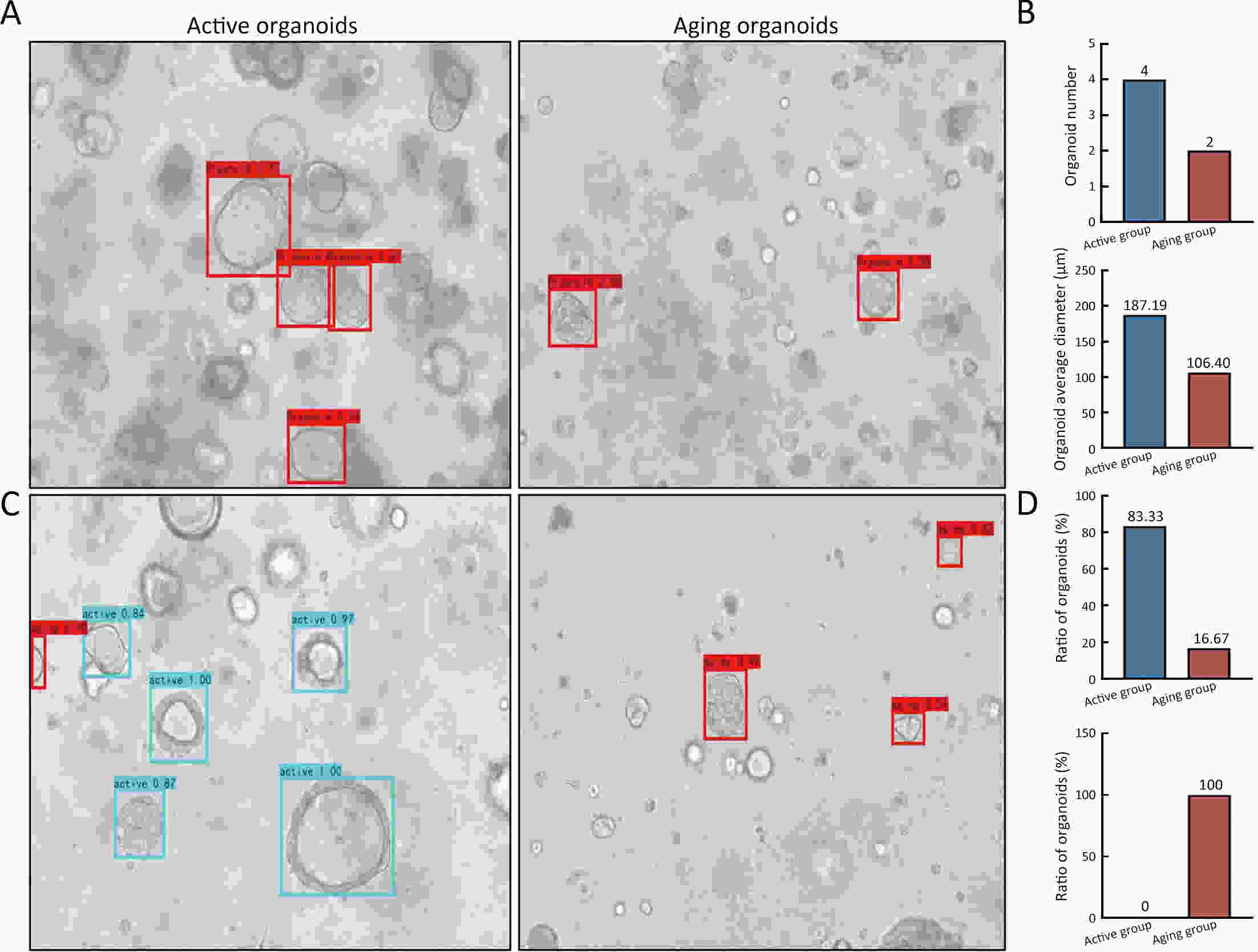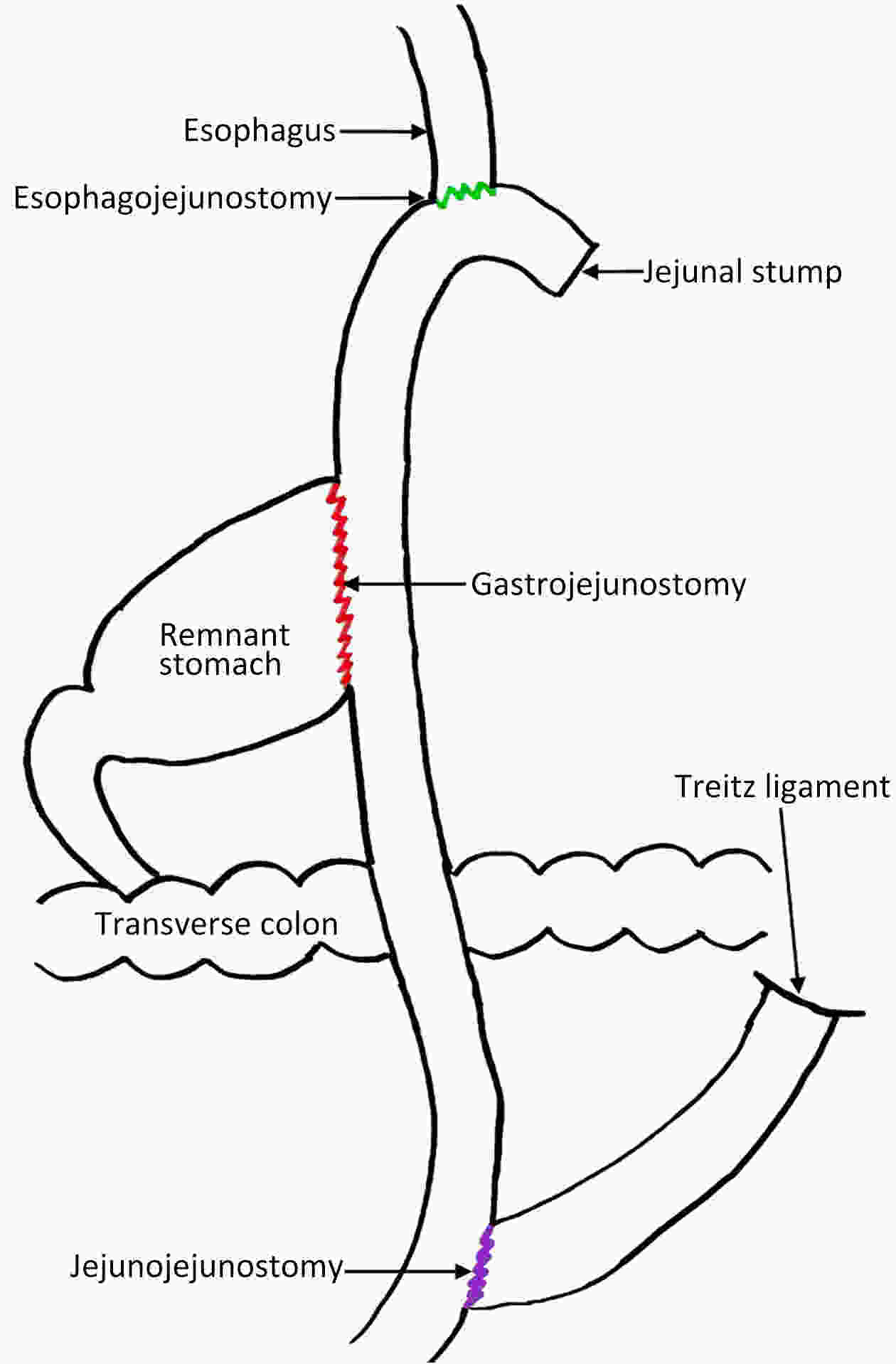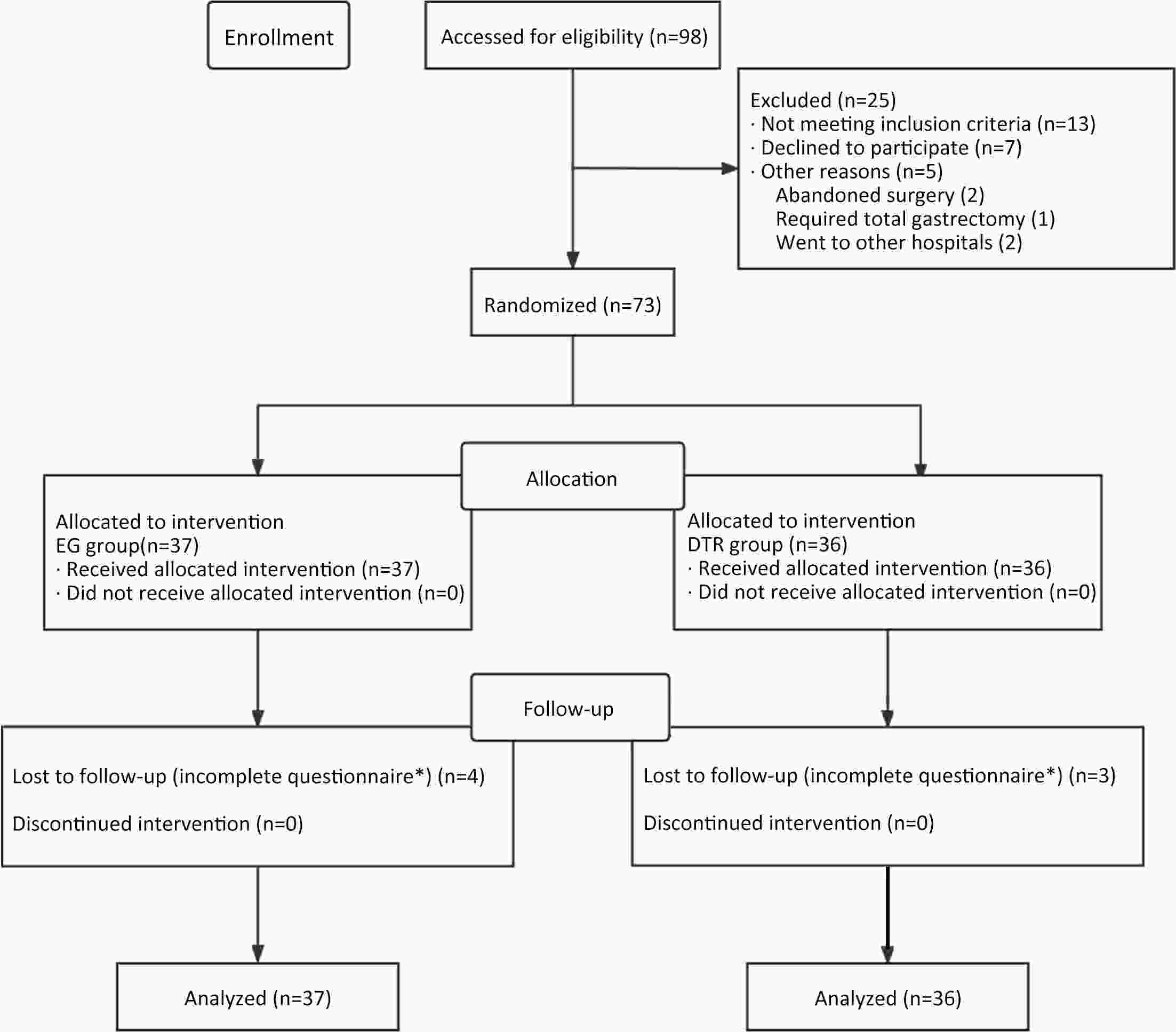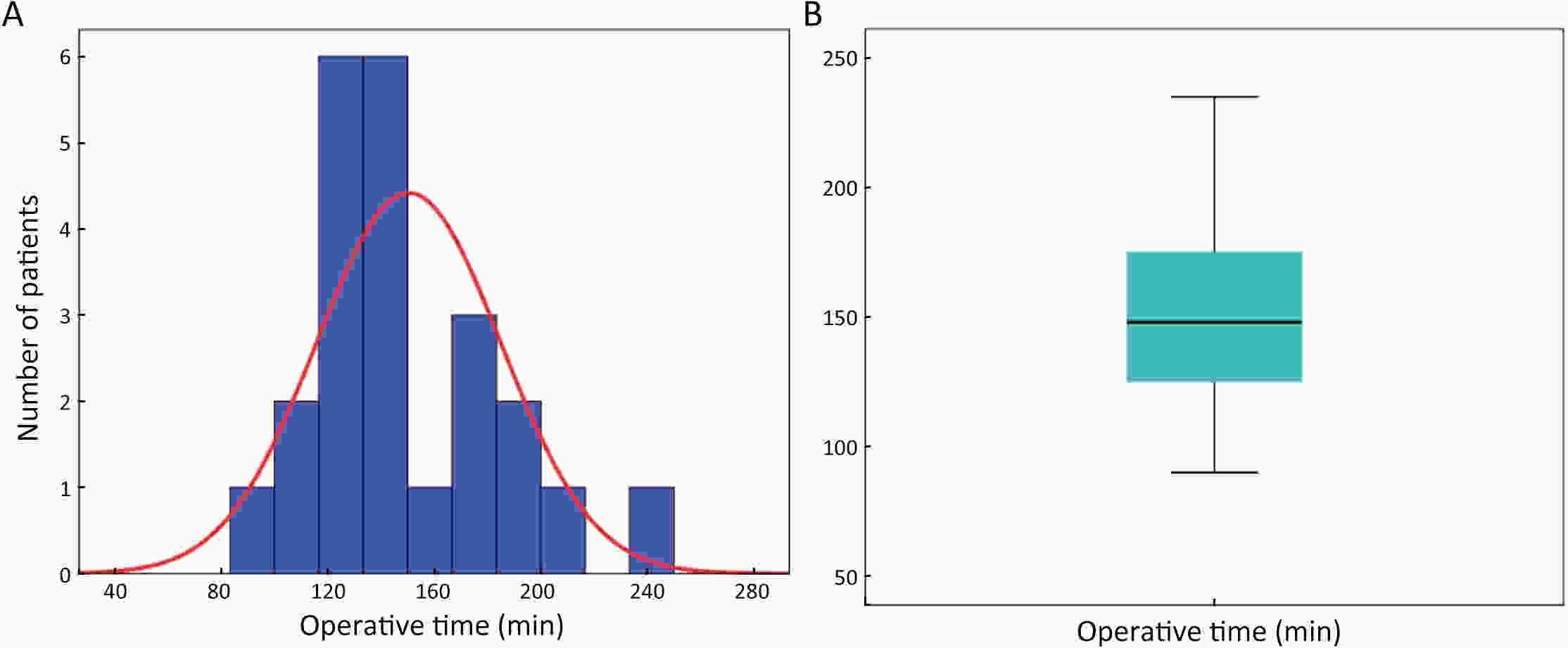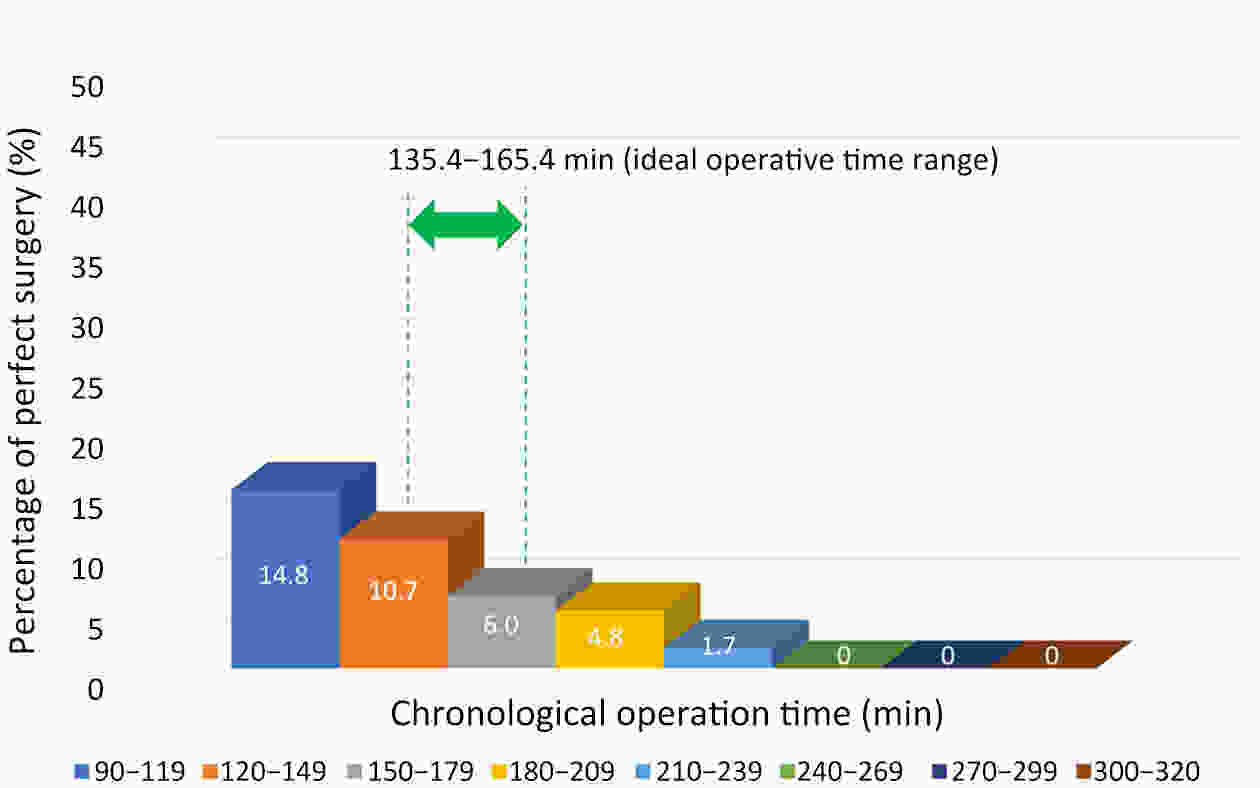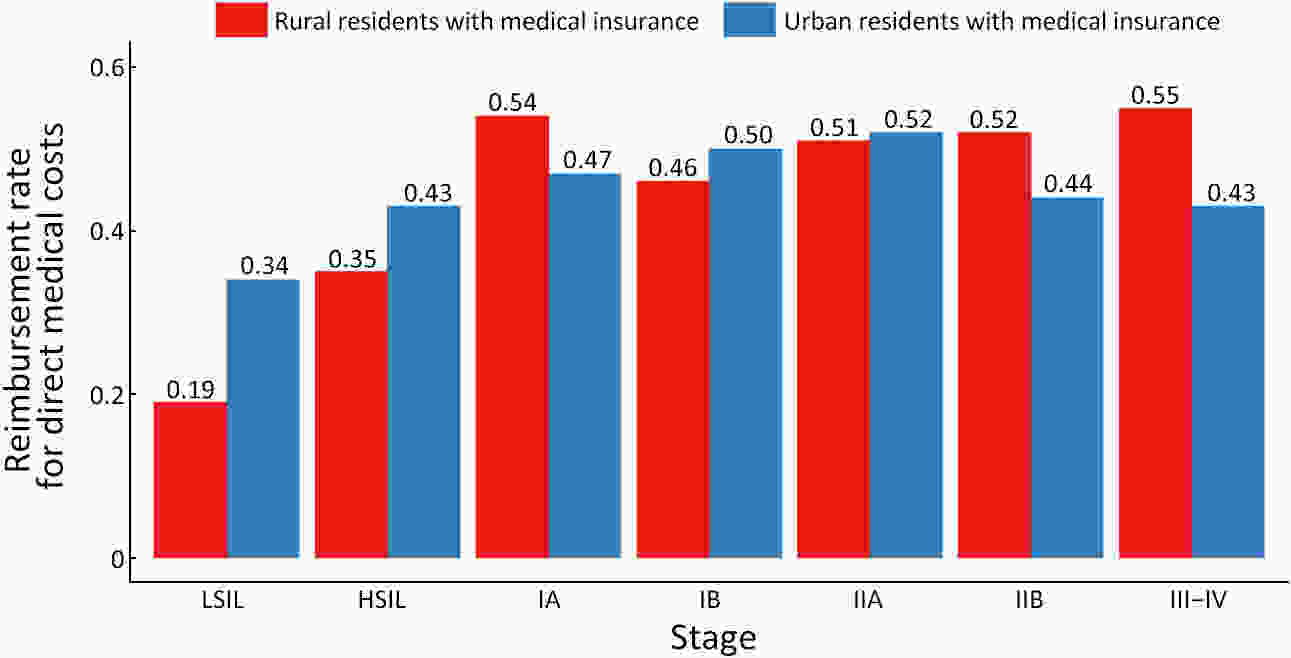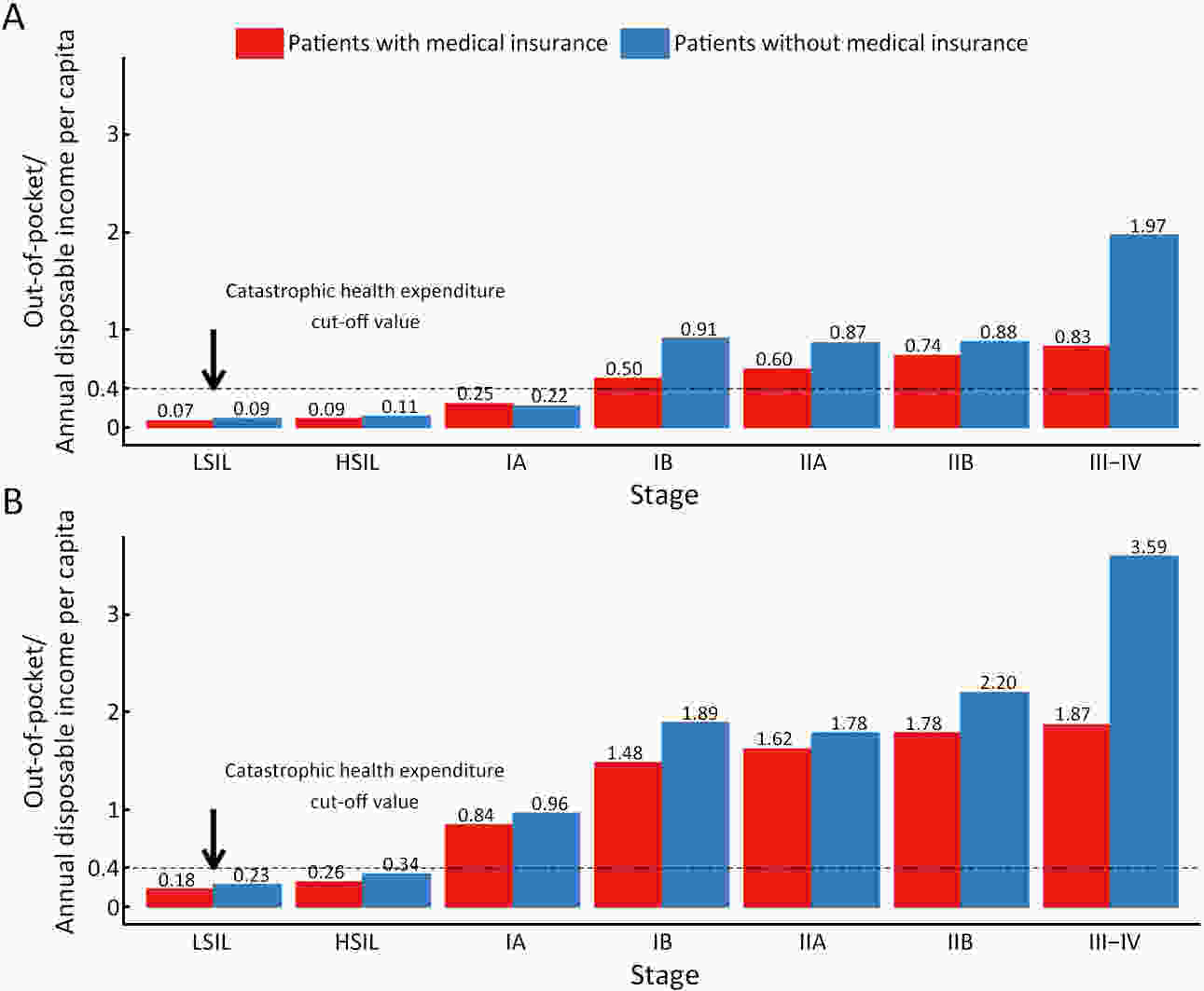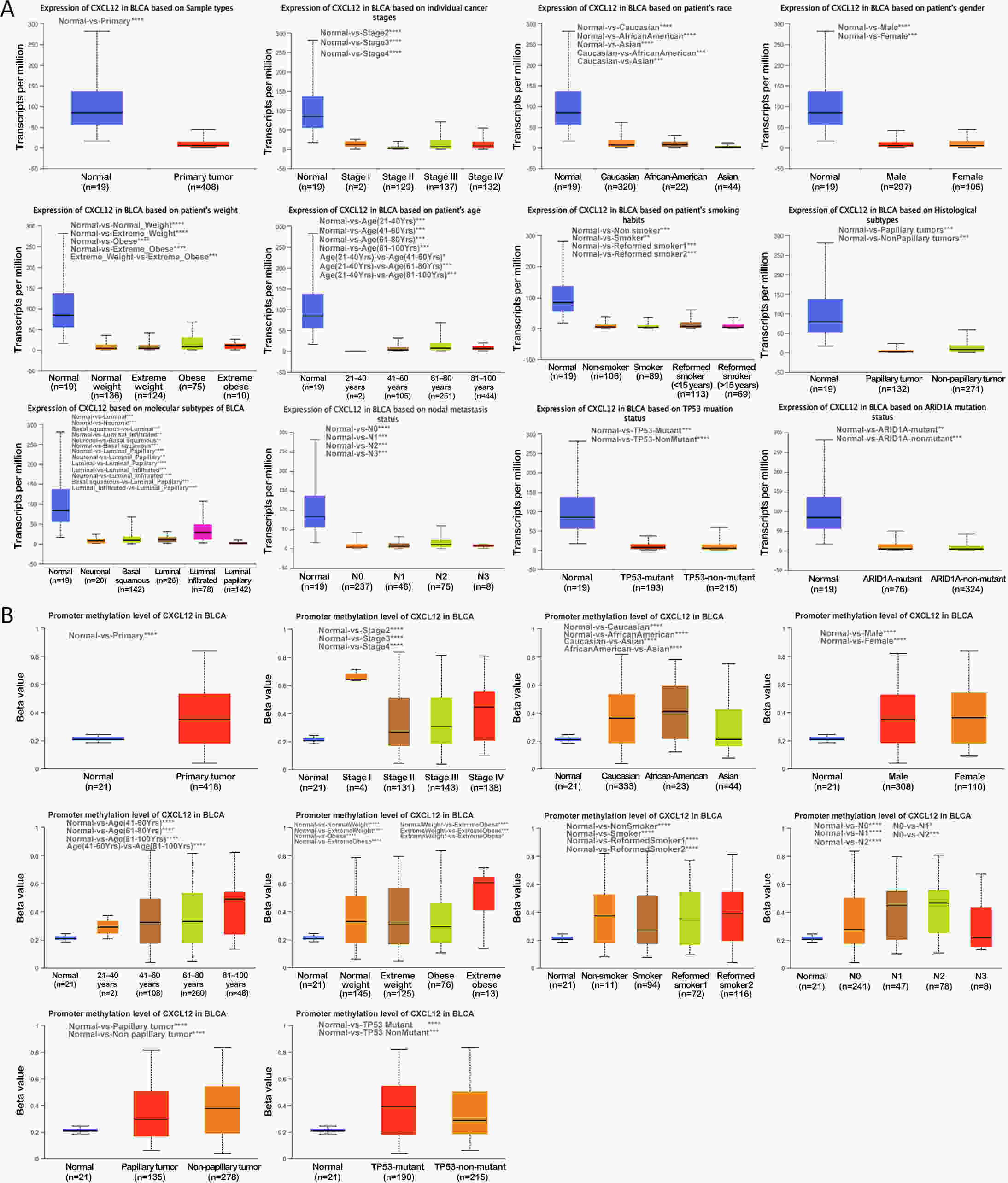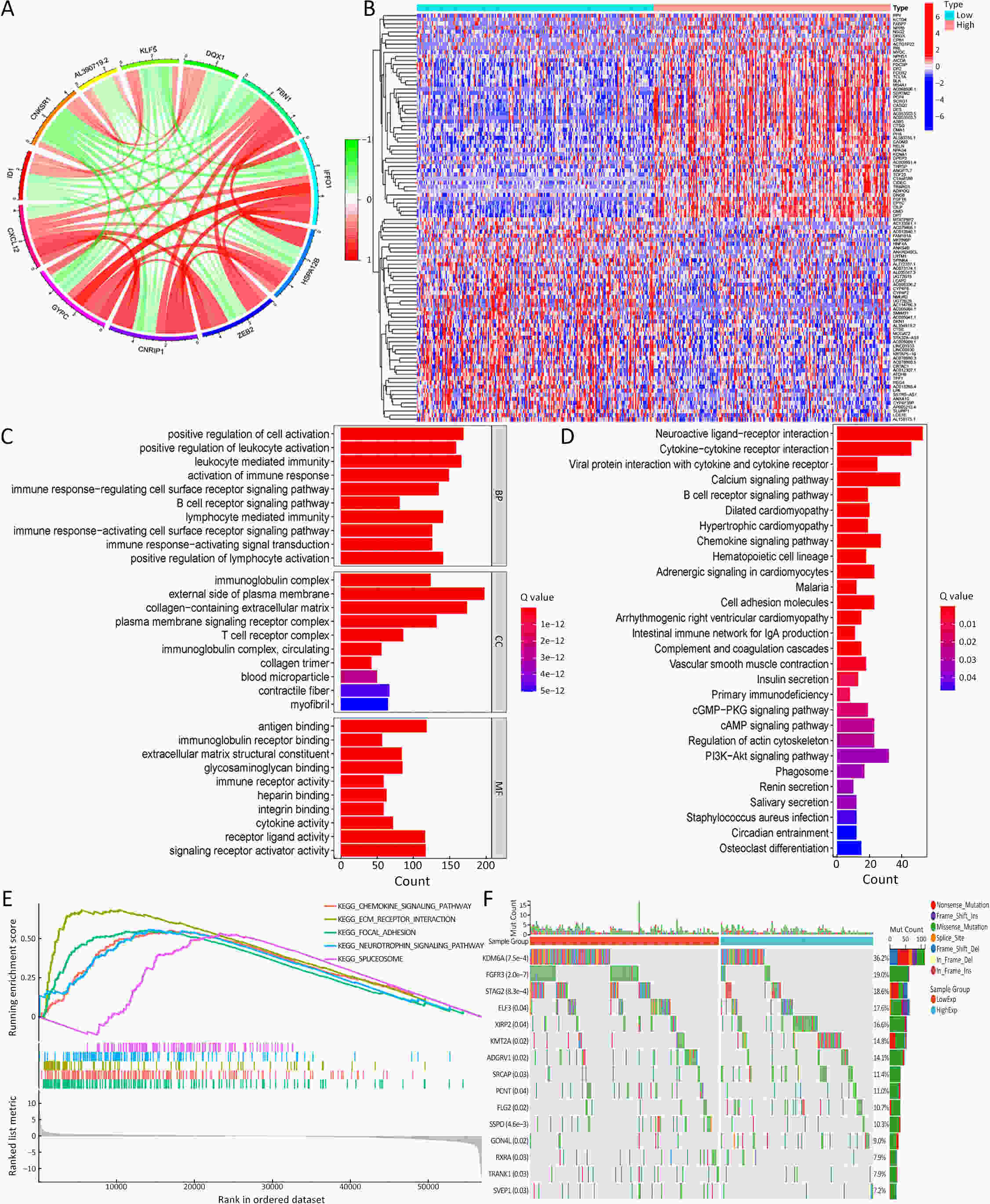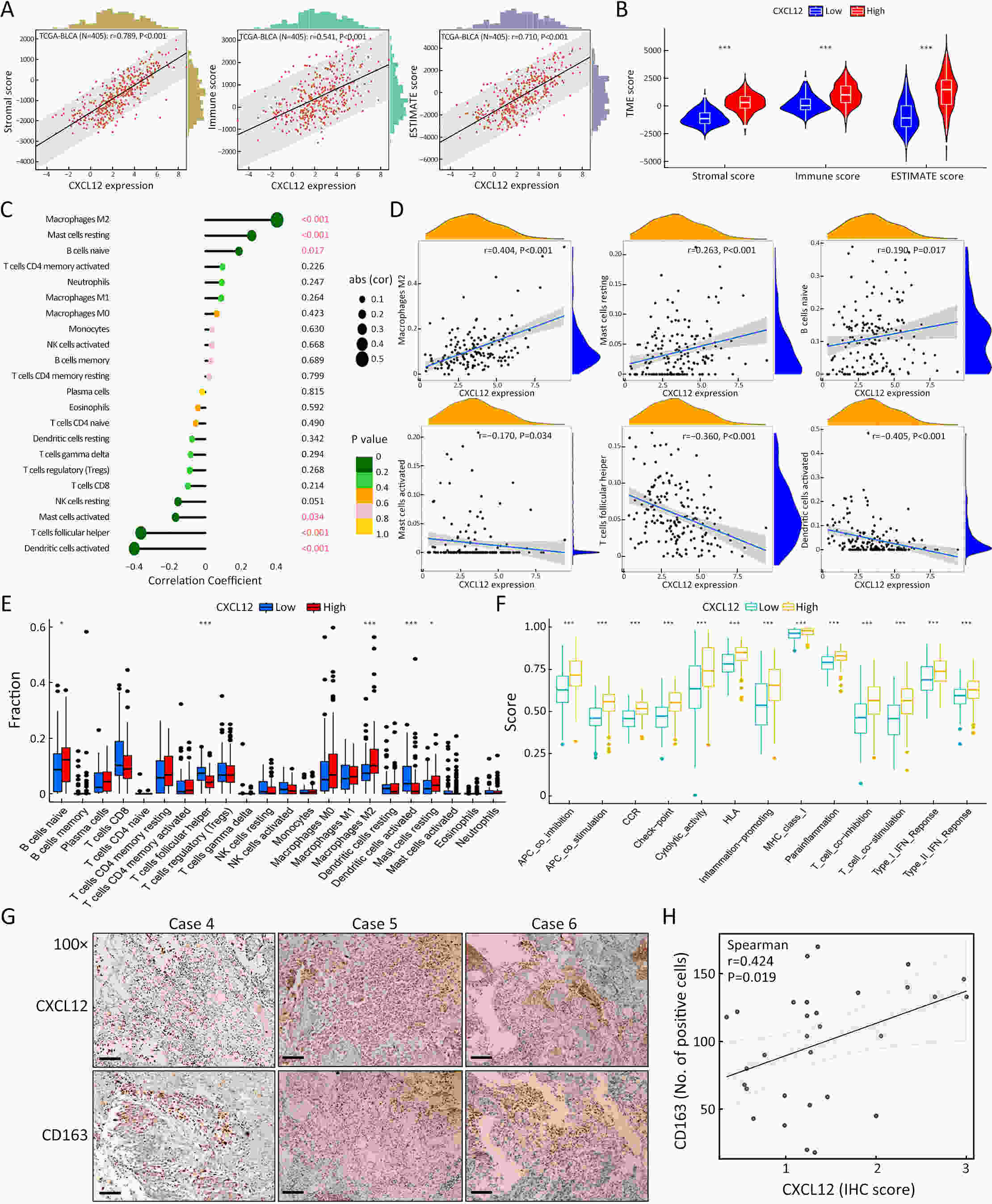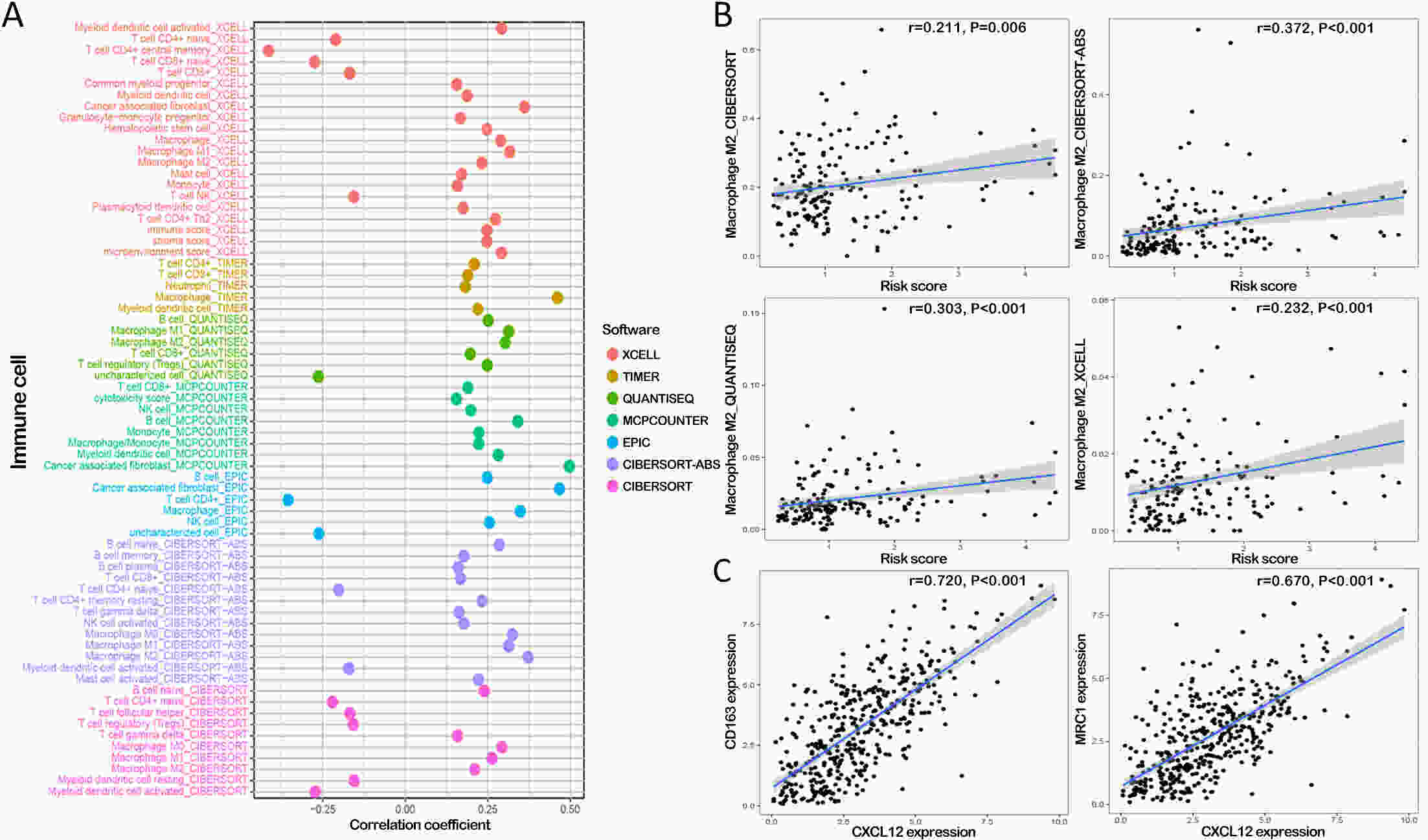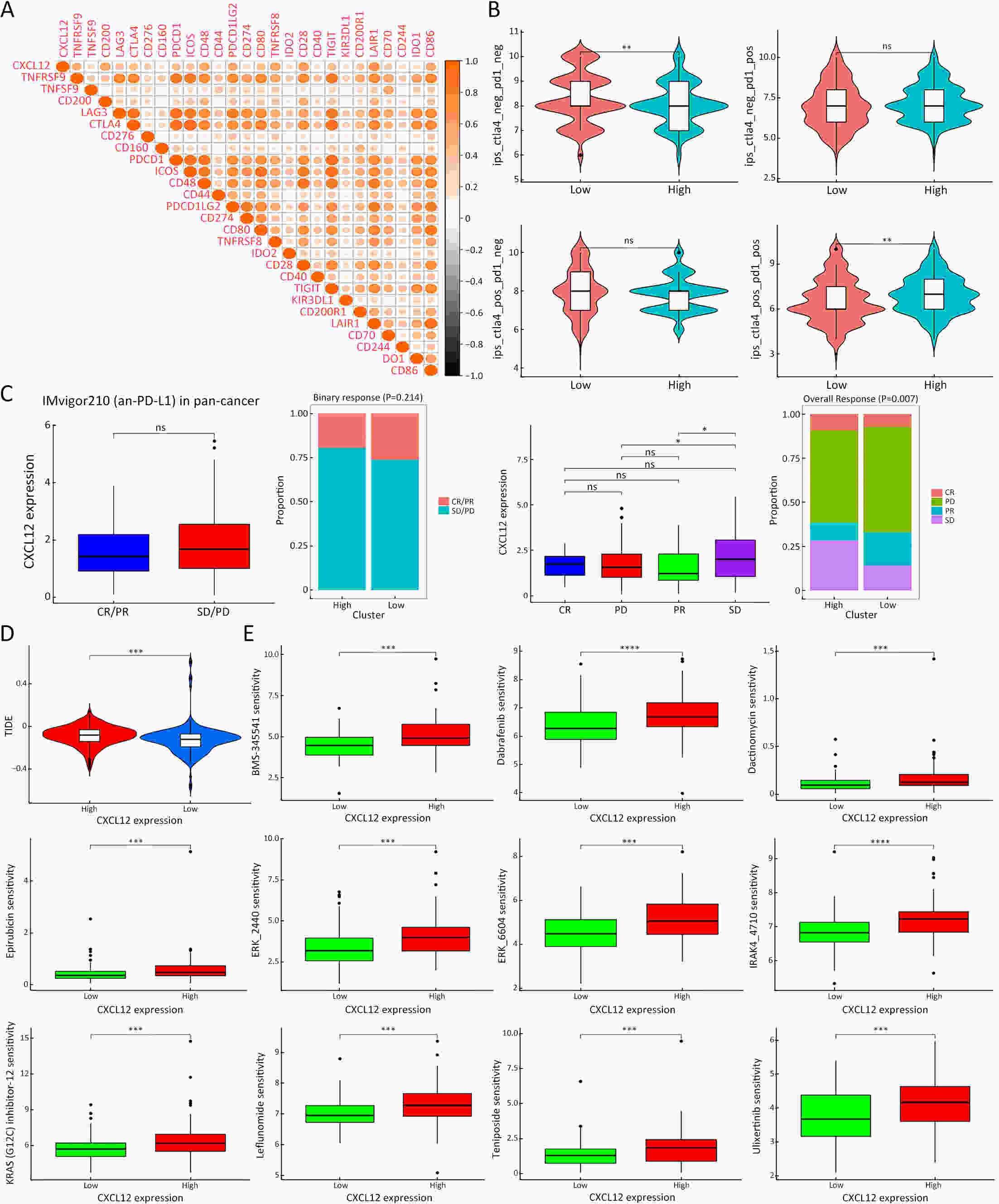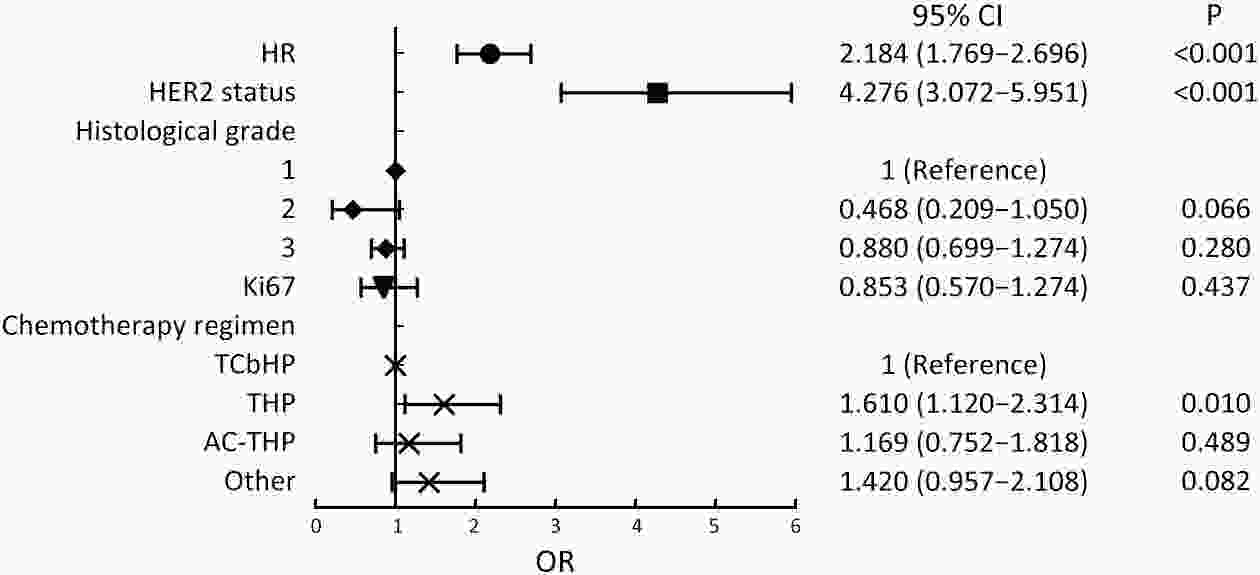2023 Vol.35(6)
Display Mode: |
2023, 35(6): 563-564.
doi: 10.21147/j.issn.1000-9604.2023.06.01
Abstract:
2023, 35(6): 565-583.
doi: 10.21147/j.issn.1000-9604.2023.06.02
Abstract:
Breast cancer is a global health concern with a significant impact on the well-being of women. Worldwide, the past several decades have witnessed changes in the incidence and mortality of breast cancer. Additionally, epidemiological data reveal distinct geographic and demographic disparities globally. A range of modifiable and non-modifiable risk factors are established as being associated with an increased risk of developing breast cancer. This review discusses genetic, hormonal, behavioral, environmental, and breast-related risk factors. Screening plays a critical role in the effective management of breast cancer. Various screening modalities, including mammography, ultrasound, magnetic resonance imaging (MRI), and physical examination, have different applications, and a combination of these modalities is applied in practice. Current screening recommendations are based on factors including age and risk, with a significant emphasis on minimizing potential harms to achieve an optimal benefits-to-harms ratio. This review provides a comprehensive insight into the epidemiology, risk factors, and screening of breast cancer. Understanding these elements is crucial for improving breast cancer management and reducing its burden on affected individuals and healthcare systems.
Breast cancer is a global health concern with a significant impact on the well-being of women. Worldwide, the past several decades have witnessed changes in the incidence and mortality of breast cancer. Additionally, epidemiological data reveal distinct geographic and demographic disparities globally. A range of modifiable and non-modifiable risk factors are established as being associated with an increased risk of developing breast cancer. This review discusses genetic, hormonal, behavioral, environmental, and breast-related risk factors. Screening plays a critical role in the effective management of breast cancer. Various screening modalities, including mammography, ultrasound, magnetic resonance imaging (MRI), and physical examination, have different applications, and a combination of these modalities is applied in practice. Current screening recommendations are based on factors including age and risk, with a significant emphasis on minimizing potential harms to achieve an optimal benefits-to-harms ratio. This review provides a comprehensive insight into the epidemiology, risk factors, and screening of breast cancer. Understanding these elements is crucial for improving breast cancer management and reducing its burden on affected individuals and healthcare systems.
2023, 35(6): 584-594.
doi: 10.21147/j.issn.1000-9604.2023.06.03
Abstract:
Cancer stands as a prominent public health concern in China, with elusive intervention targets due to unidentified high-risk causal factors for most cancers. Consequently, emphasis has shifted towards screening, diagnosing, and treating early cancer cases within the general population. However, China faces considerable obstacles in its cancer prevention and control efforts, attributing to the complexity and heterogeneity of the occurrence, progression, and prognosis of malignant tumors across populations, time, and regions. Taking esophageal cancer screening practices as an example, this review outlines the importance and assessment of cancer screening, delineating major challenges in China’s cancer prevention and control: 1) limited comprehension of cancer’s natural history; 2) lack of “China Evidence” supporting screening effectiveness and value; 3) compromised efficiency and accuracy in current screening modality; and 4) insufficient sustainability of the current screening practices and translation of relevant scientific research achievements. To address these challenges, we propose potential coping strategies: 1) establishing tailored technologies and pathways for cancer prevention and control based on population-based and clinical epidemiological studies using high-quality designs; 2) breaking conventional constraints to establish a novel cancer screening strategy aligned with real-world needs; and 3) establishing enhanced communication platforms among scientific research teams, policymakers, and industrial institutions to foster collaboration and innovation.
Cancer stands as a prominent public health concern in China, with elusive intervention targets due to unidentified high-risk causal factors for most cancers. Consequently, emphasis has shifted towards screening, diagnosing, and treating early cancer cases within the general population. However, China faces considerable obstacles in its cancer prevention and control efforts, attributing to the complexity and heterogeneity of the occurrence, progression, and prognosis of malignant tumors across populations, time, and regions. Taking esophageal cancer screening practices as an example, this review outlines the importance and assessment of cancer screening, delineating major challenges in China’s cancer prevention and control: 1) limited comprehension of cancer’s natural history; 2) lack of “China Evidence” supporting screening effectiveness and value; 3) compromised efficiency and accuracy in current screening modality; and 4) insufficient sustainability of the current screening practices and translation of relevant scientific research achievements. To address these challenges, we propose potential coping strategies: 1) establishing tailored technologies and pathways for cancer prevention and control based on population-based and clinical epidemiological studies using high-quality designs; 2) breaking conventional constraints to establish a novel cancer screening strategy aligned with real-world needs; and 3) establishing enhanced communication platforms among scientific research teams, policymakers, and industrial institutions to foster collaboration and innovation.
2023, 35(6): 595-605.
doi: 10.21147/j.issn.1000-9604.2023.06.04
Abstract:
Gastric cancer is a global public health burden, nearly one million new cases are diagnosed per year worldwide, of which 44% of cases occur in China. The prognosis of gastric cancer varies remarkably by the stage of cancer, and most of the patients in China are diagnosed at advanced stages, resulting in poor prognoses. Effective strategies to reduce the burden of gastric cancer include primary prevention through testing and treatment of Helicobacter pylori (H. pylori) and secondary prevention by screening and early detection. Although many countries have issued management guidelines and consensus reports concerning these strategies, the limited availability of healthcare resources often precludes their widespread implementation. Therefore, assessing the costs, benefits, and harms of population-based intervention measures through health economic evaluation is necessary for informed health policy decisions. Accordingly, we synthesize management approaches from different countries on H. pylori eradication and endoscopic screening, and also summarize recent advancements in health economic evaluations on population-based preventive strategies. The goal of the review is to provide empirical evidence supporting optimal resource allocation, maximizing benefits for the population, and ultimately reducing the burden of gastric cancer.
Gastric cancer is a global public health burden, nearly one million new cases are diagnosed per year worldwide, of which 44% of cases occur in China. The prognosis of gastric cancer varies remarkably by the stage of cancer, and most of the patients in China are diagnosed at advanced stages, resulting in poor prognoses. Effective strategies to reduce the burden of gastric cancer include primary prevention through testing and treatment of Helicobacter pylori (H. pylori) and secondary prevention by screening and early detection. Although many countries have issued management guidelines and consensus reports concerning these strategies, the limited availability of healthcare resources often precludes their widespread implementation. Therefore, assessing the costs, benefits, and harms of population-based intervention measures through health economic evaluation is necessary for informed health policy decisions. Accordingly, we synthesize management approaches from different countries on H. pylori eradication and endoscopic screening, and also summarize recent advancements in health economic evaluations on population-based preventive strategies. The goal of the review is to provide empirical evidence supporting optimal resource allocation, maximizing benefits for the population, and ultimately reducing the burden of gastric cancer.
2023, 35(6): 606-617.
doi: 10.21147/j.issn.1000-9604.2023.06.05
Abstract:
China ranks the first worldwide in the number of new colorectal cancer (CRC) cases and CRC-related deaths. The increasing incidence of early-onset CRC in recent years highlights the challenges related to CRC screening and prevention. High-quality colonoscopy is the universally used gold standard for CRC screening. Risk assessment combined with a two-step screening strategy based on colonoscopy and non-invasive examinations was proven to be highly effective. However, systematic use of well-established risk factors associated with CRC, beyond age, could better identify those who might harbor advanced colorectal neoplasia, improve the diagnostic yield of current screening modalities, and optimize the selection of individuals who might benefit most from preventive strategies. “Personalization” and “Standardization” are the future development directions of CRC screening, from the initiation of screening in those at high risk for CRC to follow-up after treatment, which are the key to ensure the screening efficiency.
China ranks the first worldwide in the number of new colorectal cancer (CRC) cases and CRC-related deaths. The increasing incidence of early-onset CRC in recent years highlights the challenges related to CRC screening and prevention. High-quality colonoscopy is the universally used gold standard for CRC screening. Risk assessment combined with a two-step screening strategy based on colonoscopy and non-invasive examinations was proven to be highly effective. However, systematic use of well-established risk factors associated with CRC, beyond age, could better identify those who might harbor advanced colorectal neoplasia, improve the diagnostic yield of current screening modalities, and optimize the selection of individuals who might benefit most from preventive strategies. “Personalization” and “Standardization” are the future development directions of CRC screening, from the initiation of screening in those at high risk for CRC to follow-up after treatment, which are the key to ensure the screening efficiency.
2023, 35(6): 618-626.
doi: 10.21147/j.issn.1000-9604.2023.06.06
Abstract:
ObjectiveThis study aims to provide an analysis of the current status and trends of lung cancer incidence and mortality rates in China, comparing trends with those in the United States (U.S.). MethodsData on lung cancer incidence and mortality rates spanning 2000 to 2018 were extracted from the China Cancer Registry Annual Report and the Surveillance, Epidemiology, and End Results database for China and the U.S., respectively. Crude incidence and mortality rates were calculated by sex and age, with age-standardized incidence rates (ASIR) and mortality rates (ASMR) calculated using the Segi-Doll world standard population. Trend analyses employed Joinpoint regression models to determine average annual percentage change (AAPC). The study also assessed the proportion of new cases and deaths by sex and age. ResultsIn 2018, the ASIR of lung cancer for males in China was 50.72 per 100,000 and the ASMR was 39.69 per 100,000, the ASIR for females was 26.25 per 100,000 and the ASMR was 15.24 per 100,000. Both ASIR and ASMR were higher in males and the highest in the population aged 65 years and older, with the lowest among those aged 20−49 years. In China, female ASIR demonstrated an increasing trend (AAPC: 1.16%), while ASMR decreased in both sexes (AAPCs: −0.48% for males, −1.00% for females). The U.S. exhibited decreasing trends in both ASIR and ASMR across sexes and age groups. ConclusionsThe study identified an increasing trend in lung cancer incidence among females and a decreasing mortality trend in both sexes in China. These trends are likely linked to factors such as smoking prevalence, advancements in cancer screening, and improved medical care. The findings underscore the need for tailored lung cancer prevention measures in China, particularly the reinforcement of anti-smoking policies.
2023, 35(6): 627-635.
doi: 10.21147/j.issn.1000-9604.2023.06.07
Abstract:
Gastric cancer remains a significant global health concern and its surgical management approaches have undergone significant changes in South Korea and worldwide. Subtotal or total gastrectomy with D2 lymph node dissection is well established as a standard surgical procedure for gastric cancer. With the active implementation of cancer screening in South Korea, the proportion of early gastric cancer cases has significantly increased over the past few decades, leading to a steady increase in the survival rate among patients. Furthermore, recent advances in surgical instruments and techniques have made minimally invasive surgery increasingly prevalent, not only for early but also for advanced gastric cancer. We aim to provide a comprehensive overview of the evolution and current status of gastric cancer surgery in South Korea.
Gastric cancer remains a significant global health concern and its surgical management approaches have undergone significant changes in South Korea and worldwide. Subtotal or total gastrectomy with D2 lymph node dissection is well established as a standard surgical procedure for gastric cancer. With the active implementation of cancer screening in South Korea, the proportion of early gastric cancer cases has significantly increased over the past few decades, leading to a steady increase in the survival rate among patients. Furthermore, recent advances in surgical instruments and techniques have made minimally invasive surgery increasingly prevalent, not only for early but also for advanced gastric cancer. We aim to provide a comprehensive overview of the evolution and current status of gastric cancer surgery in South Korea.
2023, 35(6): 636-644.
doi: 10.21147/j.issn.1000-9604.2023.06.08
Abstract:
Gastrointestinal cancers are a public health problem that threatens the lives of human being. A good experimental model is a powerful tool to promote the uncovering pathogenesis and establish novel treatment methods. High-quality biomedical research requires experimental models to recapitulate the physiological and pathological states of their parental tissues as much as possible. Organoids are such experimental models. Organoids refer to small organ-like cellular clusters formed by the expansion and passaging of living tissues in 3D culture medium in vitro. Organoids are highly similar to the original tissues in terms of cellular composition, cell functions, and genomic profiling. Organoids have many advantages, such as short preparation cycles, long-term storage based on cryopreservation, and reusability. In recent years, researchers carried out the establishment of organoids from gastrointestinal mucosa and cancer tissues, and accumulated valuable experiences. In order to promote effective usage and further development of organoid-related technologies in the research of gastrointestinal diseases, this study proposes a benchmark based on utilization of available experimental consumables and reagents, which are involved in the key steps such as collection and pretreatment of biospecimen, organoid construction, organoid cryopreservation and recovery, growth status evaluation, and organoid quality control. We believe that the standard for the construction and preservation of organoids derived from human gastrointestinal epithelium and cancer tissues can provide an important reference for the majority of scientific researchers.
Gastrointestinal cancers are a public health problem that threatens the lives of human being. A good experimental model is a powerful tool to promote the uncovering pathogenesis and establish novel treatment methods. High-quality biomedical research requires experimental models to recapitulate the physiological and pathological states of their parental tissues as much as possible. Organoids are such experimental models. Organoids refer to small organ-like cellular clusters formed by the expansion and passaging of living tissues in 3D culture medium in vitro. Organoids are highly similar to the original tissues in terms of cellular composition, cell functions, and genomic profiling. Organoids have many advantages, such as short preparation cycles, long-term storage based on cryopreservation, and reusability. In recent years, researchers carried out the establishment of organoids from gastrointestinal mucosa and cancer tissues, and accumulated valuable experiences. In order to promote effective usage and further development of organoid-related technologies in the research of gastrointestinal diseases, this study proposes a benchmark based on utilization of available experimental consumables and reagents, which are involved in the key steps such as collection and pretreatment of biospecimen, organoid construction, organoid cryopreservation and recovery, growth status evaluation, and organoid quality control. We believe that the standard for the construction and preservation of organoids derived from human gastrointestinal epithelium and cancer tissues can provide an important reference for the majority of scientific researchers.
2023, 35(6): 645-659.
doi: 10.21147/j.issn.1000-9604.2023.06.09
Abstract:
ObjectiveThe aim of this study was to prospectively compare double-tract reconstruction (DTR) and esophagogastrostomy (EG) after proximal gastrectomy (PG) regarding the incidence of reflux esophagitis, quality of life (QOL), nutritional status and surgical safety. MethodsThis study was a randomized controlled trial. Patients eligible for PG were enrolled and randomly assigned to the EG group and DTR group. The characteristics of patients, parameters for surgical safety, incidence of reflux esophagitis, nutrition status and QOL were collected and compared between the two groups. Univariate analysis and multivariate analysis were performed to determine the significant factors affecting the incidence of reflux esophagitis after PG. ResultsThirty-seven patients of the EG group and 36 patients of the DTR group were enrolled. The incidence of reflux esophagitis was significantly lower in the DTR group than in the EG group (8.3% vs. 32.4%, P=0.019). The DTR group demonstrated a more favorable QOL than the EG group after PG. The nutritional status was balanced within the EG group and the DTR group. The operation time was longer in the DTR group than in the EG group (191 min vs. 221 min, P=0.001), while surgical safety was similar in the two groups. ConclusionsOur research demonstrated that DTR is superior to EG after PG in terms of the incidence of reflux esophagitis and provides a more satisfactory QOL without increasing surgical complications or sacrificing nutritional status.
2023, 35(6): 660-674.
doi: 10.21147/j.issn.1000-9604.2023.06.10
Abstract:
ObjectiveWhile a rushed operation can omit essential procedures, prolonged operative time results in higher morbidity. Nevertheless, the optimal operative time range remains uncertain. This study aimed to estimate the ideal operative time range and evaluate its applicability in laparoscopic cancer surgery. MethodsA prospectively collected multicenter database of 397 patients who underwent laparoscopic distal gastrectomy were retrospectively reviewed. The ideal operative time range was statistically calculated by separately analyzing the operative time of uneventful surgeries. Finally, intraoperative and postoperative outcomes were compared among the shorter, ideal, and longer operative time groups. ResultsThe statistically calculated ideal operative time was 135.4−165.4 min. The longer operative time (LOT) group had a lower rate of uneventful, perfect surgery than the ideal or shorter operative time (IOT/SOT) group (2.8% vs. 8.8% and 2.2% vs. 13.4%, all P<0.05). Longer operative time increased bleeding, postoperative morbidities, and delayed diet and discharge (all P<0.05). Particularly, an uneventful, perfect surgery could not be achieved when the operative time exceeded 240 min. Regardless of ideal time range, SOT group achieved the highest percentage of uneventful surgery (13.4%), which was possible by surgeon’s ability to retrieve a higher number of lymph nodes and perform ≥150 gastrectomies annually. ConclusionsOperative time longer than the ideal time range (especially ≥240 min) should be avoided. If the essential operative procedure were faithfully conducted without compromising oncological safety, an operative time shorter than the ideal range leaded to a better prognosis. Efforts to minimize operative time should be attempted with sufficient surgical experience.
2023, 35(6): 675-685.
doi: 10.21147/j.issn.1000-9604.2023.06.11
Abstract:
ObjectiveCervical squamous intraepithelial lesion (SIL) and cervical cancer are major threats to females’ health and life in China, and we aimed to estimate the economic burden associated with their diagnosis and treatment. MethodsA nationwide multicenter, cross-sectional, hospital-based survey was conducted in 26 qualified hospitals across seven administrative regions of China. We investigated females who had been pathologically diagnosed with SIL and cervical cancer, and included five disease courses (“diagnosis”, “initial treatment”, “chemoradiotherapy”, “follow-up” and “recurrence/progression/metastasis”) to estimate the total costs. The median and interquartile range (IQR) of total costs (including direct medical, direct non-medical, and indirect costs), reimbursement rate by medical insurance, and catastrophic health expenditures in every clinical stage were calculated. ResultsA total of 3,471 patients in different clinical stages were analyzed, including low-grade SIL (LSIL) (n=549), high-grade SIL (HSIL) (n=803), cervical cancer stage IA (n=226), IB (n=610), IIA (n=487), IIB (n=282), III (n=452) and IV (n=62). In urban areas, the estimated total costs of LSIL and HSIL were \begin{document}$ \text {\$} $\end{document} \begin{document}$ \text {\$} $\end{document} \begin{document}$ \text {\$} $\end{document} \begin{document}$ \text {\$} $\end{document} \begin{document}$ \text {\$} $\end{document} \begin{document}$ \text {\$} $\end{document} \begin{document}$ \text {\$} $\end{document} \begin{document}$ \text {\$} $\end{document} \begin{document}$ \text {\$} $\end{document} \begin{document}$ \text {\$} $\end{document} \begin{document}$ \text {\$} $\end{document} \begin{document}$ \text {\$} $\end{document} \begin{document}$ \text {\$} $\end{document} \begin{document}$ \text {\$} $\end{document} \begin{document}$ \text {\$} $\end{document} \begin{document}$\text {\$} $\end{document} \begin{document}$ \text {\$}$\end{document} \begin{document}$ \text {\$} $\end{document} \begin{document}$ \text {\$} $\end{document} \begin{document}$ \text {\$} $\end{document} \begin{document}$ \text {\$} $\end{document} \begin{document}$ \text {\$} $\end{document} \begin{document}$ \text {\$} $\end{document} \begin{document}$ \text {\$} $\end{document} \begin{document}$ \text {\$} $\end{document} \begin{document}$ \text {\$} $\end{document} \begin{document}$ \text {\$} $\end{document} ConclusionsThe economic burden of SIL and cervical cancer in China is substantial, with a significant proportion of the costs being avoidable for patients with LSIL. Even for those with medical insurance, catastrophic health expenditures are also a major concern for patients with cervical cancer, particularly for those living in rural areas.
2023, 35(6): 686-701.
doi: 10.21147/j.issn.1000-9604.2023.06.12
Abstract:
ObjectiveThe interplay between chemokine C-X-C motif ligand 12 (CXCL12) and its specific receptors is known to trigger various signaling pathways, contributing to tumor proliferation and metastasis. Consequently, targeting this signaling axis has emerged as a potential strategy in cancer therapy. However, the precise role of CXCL12 in clinical therapy, especially in immunotherapy for bladder cancer (BCa), remains poorly elucidated. MethodsWe gathered multiple omics data from public databases to unveil the clinical relevance and tumor immune landscape associated with CXCL12 in BCa patients. Univariate and multivariate Cox regression analyses were employed to assess the independent prognostic significance of CXCL12 expression and formulate a nomogram. The expression of CXCL12 in BCa cell lines and clinical tissue samples was validated using enzyme-linked immunosorbent assays (ELISA) and immunohistochemistry (IHC). ResultsWhile transcriptional expression of CXCL12 exhibited a decrease in nearly all tumor tissues, CXCL12 methylation expression was notably increased in BCa tissues. Single-cell RNA analysis highlighted tissue stem cells and endothelial cells as the primary sources expressing CXCL12. Abnormal CXCL12 expression, based on transcriptional and methylation levels, correlated with various clinical characteristics in BCa patients. Functional analysis indicated enrichment of CXCL12 and its co-expression genes in immune regulation and cell adhesion. The immune landscape analysis unveiled a significant association between CXCL12 expression and M2 macrophages (CD163+ cells) in BCa tissues. Notably, CXCL12 expression emerged as a potential predictor of immunotherapy response and chemotherapy drug sensitivity in BCa patients. ConclusionsTaken together, these findings suggest aberrant production of CXCL12 in BCa tissues, potentially influencing the treatment responses of affected individuals.
2023, 35(6): 702-712.
doi: 10.21147/j.issn.1000-9604.2023.06.13
Abstract:
ObjectiveThe aim of this study was to investigate the factors influencing pathological complete response (pCR) rate in early breast cancer patients receiving neoadjuvant dual-target [trastuzumab (H) + pertuzumab (P)] therapy combined with chemotherapy. Additionally, the consistency of the Miller-Payne and residual cancer burden (RCB) systems in evaluating the efficacy of neoadjuvant therapy for early human epidermal growth factor receptor-2 (HER2)+ breast cancer was analyzed. MethodsThe clinicopathological data of female patients with early-stage HER2+ breast cancer who received dual-target neoadjuvant therapy at 26 hospitals of the Chinese Society of Breast Surgery (CSBrS) from March 2019 to December 2021 were collected. Patients were allocated to four groups: the HER2 immunohistochemistry (IHC) 3+/hormone receptor (HR)−, IHC3+/HR+, IHC2+ in situ hybridization (ISH)+/HR− and IHC2+ ISH+/HR+ groups. The overall pCR rate for patients, the pCR rate in each group and the factors affecting the pCR rate were analyzed. The consistency between the Miller-Payne and RCB systems in assessing the efficacy of neoadjuvant therapy was analyzed. ResultsFrom March 1, 2019, to December 31, 2021, 77,376 female patients with early-stage breast cancer were treated at 26 hospitals; 18,853 (24.4%) of these patients were HER2+. After exclusion of unqualified patients, 2,395 patients who received neoadjuvant dual-target (H+P) therapy combined with chemotherapy were included in this study. The overall pCR rate was 53.0%, and the patients’ HR statuses and different HER2+ statuses were significantly correlated with the pCR rate (P<0.05). The consistency of the pathological efficacy assessed by the Miller-Payne and RCB systems was 88.0% (κ=0.717, P<0.001). ConclusionsDifferent HER2 expression statuses and HR expression statuses are correlated with the pCR rate after dual-target neoadjuvant therapy in HER2+ breast cancer patients. There is a relatively good consistency between Miller-Payne and RCB systems in evaluating the pathologic efficacy of neoadjuvant therapy for HER2+ breast cancer.

 Abstract
Abstract FullText HTML
FullText HTML PDF 867KB
PDF 867KB
